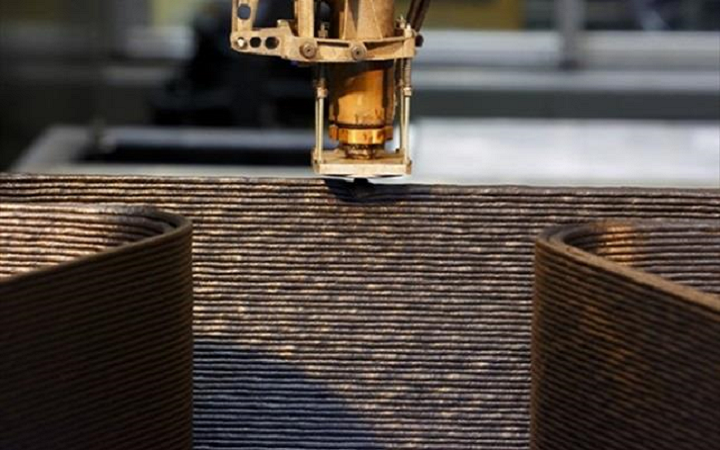
“Large format additive manufacturing is opening up tremendous new opportunities for producing large, complex parts with speed and precision. We are committed to providing the advanced material solutions customers need to win,” said Stephanie Gathman, Director, Emerging Applications, SABIC. “Beyond innovative material development, Sabic also supports customers with world-class processing, design and testing capabilities at our U.S. Center of Excellence for Additive Manufacturing in Pittsfield, Massachusetts. These resources help customers accelerate application development for large printed parts.”
The THERMOCOMP AM compounds are reinforced with glass or carbon fibers, depending on the necessary dimensional stability and stiffness, to make them stronger for use in applications in the aerospace, automotive, defense, and tooling industries. The material family’s mechanical property data and print parameters can help users optimize processing conditions and facilitate material selection. The compounds were developed specifically for large format additive manufacturing, or LFAM, and tested on the company’s Big Area Additive Manufacturing Machine (BAAM) 3D printer.
SABIC has introduced to the European market a new family of high-performance THERMOCOMP AM compounds that addresses the unique requirements of large format additive manufacturing (LFAM).
These eight reinforced Thermocomp AM compounds are based around four of SABIC’s existing amorphous resins, which offer reduced deformation when under constant pressure, show better creep behavior than semi-crystalline resins, and have lower shrinkage while cooling, which means the parts will have less thermal expansion and more dimensional stability.
These resins are:
- acrylonitrile-butadiene-styrene (ABS) – compounds based on ABS have low warpage and high print surface quality, and are also easy to process, which make them good choices for vacuum forming and thermoforming.
- polyphenylene ether (PPE) – compared to ABS-based compounds, compounds based on PPE have great hydrolytic stability, lower thermal expansion, higher temperature performance, and an increased strength-to-weight ratio.
- polycarbonate (PC) – SABIC’s PC-based compounds have higher temperature performance, stiffness, and throughput, compared to PPE and ABS, and also feature a smooth surface finish and excellent ductility.
- polyetherimide (PEI) – developed from the company’s flame-retardant Ultem resins, these PEI-based compounds have low creep and thermal expansion, high modulus and temperature performance, and great strength-to-weight ratio.
“As adoption of large format additive manufacturing increases, Sabic plans to expand our Thermocomp AM portfolio and other material offerings to meet evolving customer needs. We have a wide array of thermoplastic resins, fillers and reinforcements available to us,” said Joshua Chiaw, Director, LNP Compounds and Copolymers, SABIC. “For instance, to meet industry requirements for materials with higher chemical resistance and stiffness, we are currently evaluating new large format processes and compounds containing semi-crystalline resins such as PBT, PA, PPS and PEEK.”
Two of SABIC’s new THERMOCOMP AM materials were used to 3D print the hull for what will become the world’s first 3D printed racing yacht by Livrea. The outer layer of the hull was 3D printed with a carbon fiber-reinforced PPE compound, while carbon fiber-reinforced PEI was used to print the hull’s inner lattice support structure. SABIC printed a section of the yacht hull on its BAAM 3D printer, located at its Center of Excellence for Additive Manufacturing in Pittsfield, Massachusetts, and showcased it at formnext this week.
The 3D printed hull was collaboratively designed and developed by Livrea, SABIC, and Autodesk. The three companies chose the two THERMOCOMP AM compounds together, and took advantage of Autodesk Fusion 360 design software and SABIC’s BAAM equipment to complete the 3D printed hull.
Mike Geyer, Autodesk’s Director of Evangelism and Emerging Technology, said, “The process of using large-format additive manufacturing enabled Livrea Yacht to eliminate the need for molds and prototyping, which can be costly and inefficient. The 3D printed hull is lighter and stronger, and can be manufactured at a fraction of the cost and in half the time, giving Livrea Yacht a competitive breakthrough that would not be possible with traditional fabrication. We are entering a very exciting time for complex, high-speed additive manufacturing.”
A carbon fiber-reinforced PPE compound was used to 3D print the yacht hull’s outer layer, while the inner lattice support structure features a carbon fiber-reinforced PEI compound.
Thanks to 3D printing technology, the final hull is stronger and more lightweight than it would have been if manufactured by conventional fabrication methods. It was also able to be built in half the time, and at a much lower cost as well. In addition, 3D printing technology and SABIC’s new materials allowed Livrea to print lightweight components and complex curvature, which will actually improve the yacht’s hull performance; this would not be possible using traditional hand crafting methods and wood.
Discuss this article and other 3D printing topics at 3DPrintBoard.com or share your thoughts in the Facebook comments below.
[Source: Plastics Today]
